Search results for: 'Process+of+cl'
- Related search terms
- Process+of+cleaning+the
- Process+of+cleaning+the+a
- Process+of+clea
- Process+of+cleaning+the+applicatio
- Process+of+cleaning+the+application
-
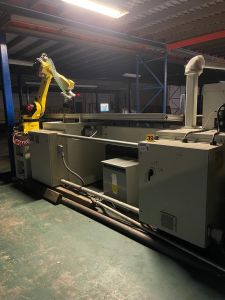 J-4941 AUTOMATED INDUSTRIAL MACHINERY AFM 2 DG WIRE BENDING MACHINEJ-4941 AUTOMATED INDUSTRIAL MACHINERY AFM 2 DG WIRE BENDING MACHINE MAKE: AIM (AUTOMATED INDUSTRIAL MACHINERY) MODEL: AFM 2 DG (ACCUFORM MODULAR 2DX) TILTING TABLE SINGLE STAGE BENDING HEAD OPTIONS: P8 F1 WE SERIAL NUMBER: C 3 F0701 2009 WIRING DIAGRAM: AFM 2D6 – P8WEF1 – 490 – V8 – 3 VOLTAGE: 460 VOLTS FREQUENCY: 50 / 60 Hz FULL LOAD: 40 KVA LARGEST LOAD: 9 KVA DIMENSIONS OF THE STAINLESS STEEL TABLE: WIDTH 15 FEET 1 INCH x LENGTH 10 FEET 5 inches LOWER STAINLESS STEEL TABLE EXPENSION DIMENSIONS: WIDTH 8 FEET x LENGTH 37.5 INCHES QUANTITY: 1 Learn More
J-4941 AUTOMATED INDUSTRIAL MACHINERY AFM 2 DG WIRE BENDING MACHINEJ-4941 AUTOMATED INDUSTRIAL MACHINERY AFM 2 DG WIRE BENDING MACHINE MAKE: AIM (AUTOMATED INDUSTRIAL MACHINERY) MODEL: AFM 2 DG (ACCUFORM MODULAR 2DX) TILTING TABLE SINGLE STAGE BENDING HEAD OPTIONS: P8 F1 WE SERIAL NUMBER: C 3 F0701 2009 WIRING DIAGRAM: AFM 2D6 – P8WEF1 – 490 – V8 – 3 VOLTAGE: 460 VOLTS FREQUENCY: 50 / 60 Hz FULL LOAD: 40 KVA LARGEST LOAD: 9 KVA DIMENSIONS OF THE STAINLESS STEEL TABLE: WIDTH 15 FEET 1 INCH x LENGTH 10 FEET 5 inches LOWER STAINLESS STEEL TABLE EXPENSION DIMENSIONS: WIDTH 8 FEET x LENGTH 37.5 INCHES QUANTITY: 1 Learn More -
 YY-2409 SLOT DIE COATING MACHINE, MAXIMUM COATING WIDTH 1550mm (61 INCHES)YY-2409 SLOT DIE COATING MACHINE, MAXIMUM COATING WIDTH 1550mm (61 INCHES) APPLICATION: 1. HOT MELT SENSITIVE PRESSURE ADHESIVE COATING AND LAMINATION LINE, FOR COATING, LAMINATION, PEELING, REWINDING FUNCTION. 2. APPLICATION MATERIAL: PET, PVC, PAPER ETC. MACHINE FEATURES: 1. THIS MACHINE INCLUDES MICROCOMPUTER PLC, TOUCH SCREEN CONTROL, SIMPLE OPERATION AND HIGH AUTOMATION; 2. USING HIGH WEAR-RESISTANT ALLOY STEEL SLOT DIE, WITH COATING CONTROL ACCURACY AND GOOD SERVICE LIFE; 3. AN OVERALL COATING ADJUSTMENT BRACKET IS INCLUDED, AND THE REPEAT POSITIONING ACCURACY IS PRECISE; 4. AUTOMATICALLY TRACKS AND DISPLAYS AND STORES THE AMOUNT OF GLUE NEEDED, MAKING THE OPERATION AND USE CONVENIENT AND FAST; 5. THE FIRST UNWINDING IS EQUIPPED WITH A WEB GUIDING DEVICE, WITH A HIGH-PERFORMANCE INFRARED SENSOR AND ELECTRIC CONTROLLER TO ENSURE THE EVEN LET OFF OF THE MATERIAL ROLL; 6. THE HEATING TEMPERATURE IS ALL CENTRALLY CONTROLLED BY PLC; 7. THE AMOUNT OF GLUE SUPPLIED BY THE METERING PUMP FOR THE COATING WIDTH IS INPUT BY THE WORKER, AND THE AMOUNT OF GLUE SUPPLIED WILL BE AUTOMATICALLY CALCULATED AND SUPPLIED TO THE DIE SLOT. QUANTITY: 1 Learn More
YY-2409 SLOT DIE COATING MACHINE, MAXIMUM COATING WIDTH 1550mm (61 INCHES)YY-2409 SLOT DIE COATING MACHINE, MAXIMUM COATING WIDTH 1550mm (61 INCHES) APPLICATION: 1. HOT MELT SENSITIVE PRESSURE ADHESIVE COATING AND LAMINATION LINE, FOR COATING, LAMINATION, PEELING, REWINDING FUNCTION. 2. APPLICATION MATERIAL: PET, PVC, PAPER ETC. MACHINE FEATURES: 1. THIS MACHINE INCLUDES MICROCOMPUTER PLC, TOUCH SCREEN CONTROL, SIMPLE OPERATION AND HIGH AUTOMATION; 2. USING HIGH WEAR-RESISTANT ALLOY STEEL SLOT DIE, WITH COATING CONTROL ACCURACY AND GOOD SERVICE LIFE; 3. AN OVERALL COATING ADJUSTMENT BRACKET IS INCLUDED, AND THE REPEAT POSITIONING ACCURACY IS PRECISE; 4. AUTOMATICALLY TRACKS AND DISPLAYS AND STORES THE AMOUNT OF GLUE NEEDED, MAKING THE OPERATION AND USE CONVENIENT AND FAST; 5. THE FIRST UNWINDING IS EQUIPPED WITH A WEB GUIDING DEVICE, WITH A HIGH-PERFORMANCE INFRARED SENSOR AND ELECTRIC CONTROLLER TO ENSURE THE EVEN LET OFF OF THE MATERIAL ROLL; 6. THE HEATING TEMPERATURE IS ALL CENTRALLY CONTROLLED BY PLC; 7. THE AMOUNT OF GLUE SUPPLIED BY THE METERING PUMP FOR THE COATING WIDTH IS INPUT BY THE WORKER, AND THE AMOUNT OF GLUE SUPPLIED WILL BE AUTOMATICALLY CALCULATED AND SUPPLIED TO THE DIE SLOT. QUANTITY: 1 Learn More -
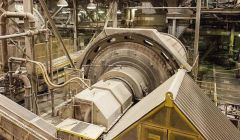 TT-1812 ALLIS CHALMERS SVEDALA BALL MILL, YEAR 1979 REBUILT 1998TT-1812 ALLIS CHALMERS SVEDALA BALL MILL, YEAR 1979 REBUILT 1998 PREVIOUSLY USED AT PHOSPHATE MINERALS PROCESSING FACILITY ALSO AVAILABLE PUMPS, SPARE PARTS, DRIVES, CONTROLS TO COMPRISE OF COMPLETE MILL SYSTEM EQUIPMENT WAS DISMANTLED AND IS NOW BEING STORED AT CRANE YARD FOR EASY LOADING QUANTITY: 1 Learn More
TT-1812 ALLIS CHALMERS SVEDALA BALL MILL, YEAR 1979 REBUILT 1998TT-1812 ALLIS CHALMERS SVEDALA BALL MILL, YEAR 1979 REBUILT 1998 PREVIOUSLY USED AT PHOSPHATE MINERALS PROCESSING FACILITY ALSO AVAILABLE PUMPS, SPARE PARTS, DRIVES, CONTROLS TO COMPRISE OF COMPLETE MILL SYSTEM EQUIPMENT WAS DISMANTLED AND IS NOW BEING STORED AT CRANE YARD FOR EASY LOADING QUANTITY: 1 Learn More -
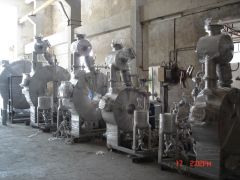 J-4564 5 KILO SAMPLE SOFT FLOW MACHINEJ-4564 5 KILO SAMPLE SOFT FLOW MACHINE CAPACITY 5 TO 10 KILO MATERIAL CONSTRUCTION [HTHP-VESSEL] 316 L 5 mm THICKNESS PUMP SS 316 – MOTOR HP 3 HP – 1500 RPM DIAMETER OF VESSEL 1150 mm TOTAL LENTGH 2200 mm TOTAL WIDTH 3900 mm MAXIMUM WORKING HIGH TEMP. 135° C MAXIMUM WORKING PRESSURE 3 KG/ cm2 TUBE 1 TUBE SIZE DIAMETER 200 mm NOZZLE SIZE [OVERFLOW FIX ] DIAMETER 190 mm X 168 mm INSIDE WINCH (HP) 1 HP X 1 FOR FULLY AUTO COLOR TANK INJECTION PUMP 1 HP/3000 RPM UNLOADING WINCH 1 HP /200RPM GEAR BOX COLOR TANK (LITERS) 20 LITERS X 2 PIECES FILL (AUTO) DIAMETER 1.5” X 2 DRAIN [ AUTO] DIAMETER 1.5 ” X 2 OVER FLOW [AUTO] DIAMETER 1.5” X 1 HEAT [ AUTO] DIAMETER 1” COOL [ AUTO] DIAMETER 1” LIQUOR RATIO 1: 5 TO 1 : 7 [ DEPEND ON FABRIC] QUANTITY: 1 Learn More
J-4564 5 KILO SAMPLE SOFT FLOW MACHINEJ-4564 5 KILO SAMPLE SOFT FLOW MACHINE CAPACITY 5 TO 10 KILO MATERIAL CONSTRUCTION [HTHP-VESSEL] 316 L 5 mm THICKNESS PUMP SS 316 – MOTOR HP 3 HP – 1500 RPM DIAMETER OF VESSEL 1150 mm TOTAL LENTGH 2200 mm TOTAL WIDTH 3900 mm MAXIMUM WORKING HIGH TEMP. 135° C MAXIMUM WORKING PRESSURE 3 KG/ cm2 TUBE 1 TUBE SIZE DIAMETER 200 mm NOZZLE SIZE [OVERFLOW FIX ] DIAMETER 190 mm X 168 mm INSIDE WINCH (HP) 1 HP X 1 FOR FULLY AUTO COLOR TANK INJECTION PUMP 1 HP/3000 RPM UNLOADING WINCH 1 HP /200RPM GEAR BOX COLOR TANK (LITERS) 20 LITERS X 2 PIECES FILL (AUTO) DIAMETER 1.5” X 2 DRAIN [ AUTO] DIAMETER 1.5 ” X 2 OVER FLOW [AUTO] DIAMETER 1.5” X 1 HEAT [ AUTO] DIAMETER 1” COOL [ AUTO] DIAMETER 1” LIQUOR RATIO 1: 5 TO 1 : 7 [ DEPEND ON FABRIC] QUANTITY: 1 Learn More -
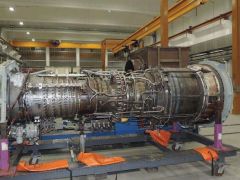 TT-1391 GENERAL ELECTRIC LM2500+ G4 GAS TURBINE GENERATORTT-1391 GENERAL ELECTRIC LM2500+ G4 GAS TURBINE GENERATOR GENERAL ELECTRIC LM2500+ G4 GAS TURBINE GENERATOR CONDITION: VERY GOOD AVAILABLE ALSO WITH WARRANTY IN Q1 2023 DELIVERY: FIRST QUARTER OF 2023 QUANTITY: 1 Learn More
TT-1391 GENERAL ELECTRIC LM2500+ G4 GAS TURBINE GENERATORTT-1391 GENERAL ELECTRIC LM2500+ G4 GAS TURBINE GENERATOR GENERAL ELECTRIC LM2500+ G4 GAS TURBINE GENERATOR CONDITION: VERY GOOD AVAILABLE ALSO WITH WARRANTY IN Q1 2023 DELIVERY: FIRST QUARTER OF 2023 QUANTITY: 1 Learn More -
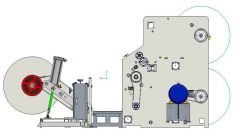 TT-1370 AUTOMATIC HIGH SPEED SLITTING REWINDING MACHINE, WIDTH 1900mm, NEWTT-1370 AUTOMATIC HIGH SPEED SLITTING REWINDING MACHINE, WIDTH 1900mm, NEW SUITABLE FOR ROLLS OF PLASTIC FILMS, LAMINATED FILMS, PAPER, ETC. SPEED: 0-400M/MIN SLITTING WIDTH: 30 TO 1900mm UNWINDING DIAMETER MAXIMUM ø1400mm WINDING DIAMETER: ø610mm MACHINE WEIGHT: 5000KG TOTAL MOTOR POWER: 31KW DIMENSIONS: W3500 X L3500 X H1900 (mm) PAPER CORE 3" (DIAMETER φ76mm DIAMETER φ92mm) OR 3.6” CORE ACCURACY: ≤ 0.30mm TENSION SETTING RANGE: 2 ~ 30KG WINDING MOTOR POWER: 11KW X 2 TRACTION MOTOR: 11KW MACHINE COLOR: STANDARD WHITE (OR AS REQUIRED) QUANTITY: 1 SET Learn More
TT-1370 AUTOMATIC HIGH SPEED SLITTING REWINDING MACHINE, WIDTH 1900mm, NEWTT-1370 AUTOMATIC HIGH SPEED SLITTING REWINDING MACHINE, WIDTH 1900mm, NEW SUITABLE FOR ROLLS OF PLASTIC FILMS, LAMINATED FILMS, PAPER, ETC. SPEED: 0-400M/MIN SLITTING WIDTH: 30 TO 1900mm UNWINDING DIAMETER MAXIMUM ø1400mm WINDING DIAMETER: ø610mm MACHINE WEIGHT: 5000KG TOTAL MOTOR POWER: 31KW DIMENSIONS: W3500 X L3500 X H1900 (mm) PAPER CORE 3" (DIAMETER φ76mm DIAMETER φ92mm) OR 3.6” CORE ACCURACY: ≤ 0.30mm TENSION SETTING RANGE: 2 ~ 30KG WINDING MOTOR POWER: 11KW X 2 TRACTION MOTOR: 11KW MACHINE COLOR: STANDARD WHITE (OR AS REQUIRED) QUANTITY: 1 SET Learn More -
 T-9895 FULLY AUTOMATIC MATTRESS (PET PAD) MAKING MACHINE, 120 TO 150 PIECES PER MINUTET-9895 FULLY AUTOMATIC MATTRESS (PET PAD) MAKING MACHINE, 120 TO 150 PIECES PER MINUTE TECHNICAL PARAMETERS FUNCTION: EMBOSSING, CUTTING, FOLDING OF PET PAD FOLDING METHOD: 1/3 IN THE WIDTH DIRECTION, 2 TIMES IN THE LENGTH DIRECTION RAW MATERIAL WIDTH: HYDROPHILIC CLOTH WIDTH ≦ 600mm (SLIGHTLY SMALLER THAN THE WIDTH OF THE CAST FILM) WATER ABSORPTION LAYER WIDTH = HYDROPHILIC CLOTH WIDTH: 50 TO 60mm CAST FILM WIDTH ≦ 600mm PRODUCT UNFOLDED SIZE: 400 X 600mm; 500 X 700mm; 600 X 900mm FOLDED SIZE: 135 X 200mm; 170 X 250mm; 200 X 300mm SPEED: 120 TO 150 PIECES PER MINUTE FINISHED PRODUCT LENGTH: LENGTH ERROR ≦ 5mm THE POSITION OF THE ABSORBENT LAYER: THE SAME LENGTH AS THE HYDROPHILIC CLOTH AND CAST FILM WATER-ABSORBING LAMINATED PATTERN: DIAMOND PATTERN (CUSTOMIZABLE) NUMBER OF FOLDING LAYERS: 3 LAYERS EACH FOLD WIDTH: 135 TO 200mm APPLICABLE RAW MATERIALS: HYDROPHILIC NON-WOVEN FABRIC ABOUT 20 GSM WATER ABSORPTION LAYER 0.5 TO 3mm CAST FILM ABOUT 25 GSM SSS SPUNBOND WEIGHT: 13 TO 15 GSM THE INNER DIAMETER OF THE RAW MATERIAL CORE: 3 INCHES (75mm) RAW MATERIAL DIAMETER: NON-WOVEN FABRIC ≦ 700mm WATER ABSORPTION LAYER ≦ 1200mm CAST FILM ≦ 400mm MACHINE SIZE (L X W X H) MACHINE: 15000 X 2000 X 1700mm VOLTAGE: 380V/50Hz POWER: 12KW (WITHOUT WOOD PULP SECTION) NET WEIGHT: 6T AIR COMPRESSOR: ≥ 0.6MPA 1.2m³/MINUTE, 15KW (CUSTOMER FURNISHES) NONWOVEN ROLL MAXIMUM DIAMETER: 650mm FILM ROLL DIAMETER: 450mm REQUIRES 2 40 FOOT HQ CONTAINERS Learn More
T-9895 FULLY AUTOMATIC MATTRESS (PET PAD) MAKING MACHINE, 120 TO 150 PIECES PER MINUTET-9895 FULLY AUTOMATIC MATTRESS (PET PAD) MAKING MACHINE, 120 TO 150 PIECES PER MINUTE TECHNICAL PARAMETERS FUNCTION: EMBOSSING, CUTTING, FOLDING OF PET PAD FOLDING METHOD: 1/3 IN THE WIDTH DIRECTION, 2 TIMES IN THE LENGTH DIRECTION RAW MATERIAL WIDTH: HYDROPHILIC CLOTH WIDTH ≦ 600mm (SLIGHTLY SMALLER THAN THE WIDTH OF THE CAST FILM) WATER ABSORPTION LAYER WIDTH = HYDROPHILIC CLOTH WIDTH: 50 TO 60mm CAST FILM WIDTH ≦ 600mm PRODUCT UNFOLDED SIZE: 400 X 600mm; 500 X 700mm; 600 X 900mm FOLDED SIZE: 135 X 200mm; 170 X 250mm; 200 X 300mm SPEED: 120 TO 150 PIECES PER MINUTE FINISHED PRODUCT LENGTH: LENGTH ERROR ≦ 5mm THE POSITION OF THE ABSORBENT LAYER: THE SAME LENGTH AS THE HYDROPHILIC CLOTH AND CAST FILM WATER-ABSORBING LAMINATED PATTERN: DIAMOND PATTERN (CUSTOMIZABLE) NUMBER OF FOLDING LAYERS: 3 LAYERS EACH FOLD WIDTH: 135 TO 200mm APPLICABLE RAW MATERIALS: HYDROPHILIC NON-WOVEN FABRIC ABOUT 20 GSM WATER ABSORPTION LAYER 0.5 TO 3mm CAST FILM ABOUT 25 GSM SSS SPUNBOND WEIGHT: 13 TO 15 GSM THE INNER DIAMETER OF THE RAW MATERIAL CORE: 3 INCHES (75mm) RAW MATERIAL DIAMETER: NON-WOVEN FABRIC ≦ 700mm WATER ABSORPTION LAYER ≦ 1200mm CAST FILM ≦ 400mm MACHINE SIZE (L X W X H) MACHINE: 15000 X 2000 X 1700mm VOLTAGE: 380V/50Hz POWER: 12KW (WITHOUT WOOD PULP SECTION) NET WEIGHT: 6T AIR COMPRESSOR: ≥ 0.6MPA 1.2m³/MINUTE, 15KW (CUSTOMER FURNISHES) NONWOVEN ROLL MAXIMUM DIAMETER: 650mm FILM ROLL DIAMETER: 450mm REQUIRES 2 40 FOOT HQ CONTAINERS Learn More -
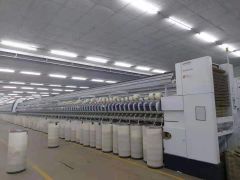 T-8176 A8 OPEN END MACHINE, 552 ROTORS, YEAR 2015T-8176 A8 OPEN END MACHINE, 552 ROTORS, YEAR 2015 A8 OPEN END MACHINE YEAR 2015 552 ROTORS PER SET SAME TIME CAN PRODUCE 3 TYPE YARN 4 PCS ROBOTS COROLAB CLEANER T633BD ROTOR CUP BD174 COMBING ROLLER MOMENT SPINNING 20S COTTON YARN MACHINE WIDTH: 1547mm QUANTITY: 2 Learn More
T-8176 A8 OPEN END MACHINE, 552 ROTORS, YEAR 2015T-8176 A8 OPEN END MACHINE, 552 ROTORS, YEAR 2015 A8 OPEN END MACHINE YEAR 2015 552 ROTORS PER SET SAME TIME CAN PRODUCE 3 TYPE YARN 4 PCS ROBOTS COROLAB CLEANER T633BD ROTOR CUP BD174 COMBING ROLLER MOMENT SPINNING 20S COTTON YARN MACHINE WIDTH: 1547mm QUANTITY: 2 Learn More -
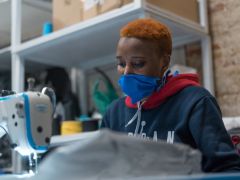 D-2388 What’s the Best Material for a Mask?
D-2388 What’s the Best Material for a Mask?Federal health officials have now recommended that we cover our faces with fabric during the coronavirus pandemic. But what material offers the most protection?
The Centers for Disease Control and Prevention has posted a no-sew mask pattern using a bandanna and a coffee filter as well as a video on making masks using rubber bands and folded fabrics found at home.
While a simple face covering can reduce the spread of coronavirus by blocking outgoing germs from coughs or sneezes of an infected person, experts say there is more variation in how much homemade masks might protect the wearer from incoming germs, depending on the fit and quality of the material used.
Scientists around the country have taken it upon themselves to identify everyday materials that do a better job of filtering microscopic particles. In recent tests, HEPA furnace filters scored well, as did vacuum cleaner bags, layers of 600-count pillowcases and fabric similar to flannel pajamas. Stacked coffee filters had medium scores. Scarves and bandanna material had the lowest scores, but still captured a small percentage of particles.
If you don’t have any of the materials that were tested, a simple light test can help you decide whether a fabric is a good candidate for a mask.
“Hold it up to a bright light,” said Dr. Scott Segal, chairman of anesthesiology at Wake Forest Baptist Health who recently studied homemade masks. “If light passes really easily through the fibers and you can almost see the fibers, it’s not a good fabric. If it’s a denser weave of thicker material and light doesn’t pass through it as much, that’s the material you want to use.”
Researchers say it’s important to remember that lab studies are conducted under perfect conditions with no leaks or gaps in the mask, but the test methods give us a way to compare materials. And while the degree of filtration for some homemade masks seems low, most of us — who are staying home and practicing social distancing in public — don’t need the high level of protection required for medical workers. More important, any face covering is better than none, especially if worn by a person who has the virus but doesn’t know it.
The biggest challenge of choosing a homemade mask material is to find a fabric that is dense enough to capture viral particles, but breathable enough that we can actually wear it. Some items being touted online promise high filtration scores, but the material would be unwearable.
Dressing Up for Work … at Home
Yang Wang, an assistant professor of environmental engineering at Missouri University of Science and Technology, worked with his graduate students to study various combinations of layered materials — including both air filters and fabric. “You need something that is efficient for removing particles, but you also need to breathe,” said Dr. Wang, who last fall won an international award for aerosol research.To test everyday materials, scientists are using methods similar to those used to test medical masks, which everybody agrees should be saved for medical workers who are exposed to high doses of virus from seeing infected patients. The best medical mask — called the N95 respirator — filters out at least 95 percent of particles as small as 0.3 microns. By comparison, a typical surgical mask — made using a rectangular piece of pleated fabric with elastic ear loops — has a filtration efficiency ranging from 60 to 80 percent.
Dr. Wang’s group tested two types of air filters. An allergy-reduction HVAC filter worked the best, capturing 89 percent of particles with one layer and 94 percent with two layers. A furnace filter captured 75 percent with two layers, but required six layers to achieve 95 percent. To find a filter similar to those tested, look for a minimum efficiency reporting value (MERV) rating of 12 or higher or a microparticle performance rating of 1900 or higher.
The problem with air filters is that they potentially could shed small fibers that would be risky to inhale. So if you want to use a filter, you need to sandwich the filter between two layers of cotton fabric. Dr. Wang said one of his grad students made his own mask by following the instructions in the C.D.C. video, but adding several layers of filter material inside a bandanna.
Dr. Wang’s group also found that when certain common fabrics were used, two layers offered far less protection than four layers. A 600 thread count pillow case captured just 22 percent of particles when doubled, but four layers captured nearly 60 percent. A thick woolen yarn scarf filtered 21 percent of particles in two layers, and 48.8 percent in four layers. A 100 percent cotton bandanna did the worst, capturing only 18.2 percent when doubled, and just 19.5 percent in four layers.
The group also tested Brew Rite and Natural Brew basket-style coffee filters, which, when stacked in three layers, showed 40 to 50 percent filtration efficiency — but they were less breathable than other options.
If you are lucky enough to know a quilter, ask them to make you a mask. Tests performed at the Wake Forest Institute for Regenerative Medicine in Winston-Salem, N.C., showed good results for homemade masks using quilting fabric. Dr. Segal, of Wake Forest Baptist Health, who led the study, noted that quilters tend to use high-quality, high-thread count cotton. The best homemade masks in his study were as good as surgical masks or slightly better, testing in the range of 70 to 79 percent filtration. Homemade masks that used flimsier fabric tested as low as 1 percent filtration, Dr. Segal said.
The best-performing designs were a mask constructed of two layers of high-quality, heavyweight “quilter’s cotton,” a two-layer mask made with thick batik fabric, and a double-layer mask with an inner layer of flannel and outer layer of cotton.
Bonnie Browning, executive show director for the American Quilter’s Society, said that quilters prefer tightly woven cottons and batik fabrics that stand up over time. Ms. Browning said most sewing machines can handle only two layers of fabric when making a pleated mask, but someone who wanted four layers of protection could wear two masks at a time.
Ms. Browning said she recently reached out to quilters on Facebook and heard from 71 people who have made a combined total of nearly 15,000 masks. “We quilters are very much in the thick of what’s going on with this,” said Ms. Browning, who lives in Paducah, Ky. “One thing most of us have is a stash of fabric.”
People who don’t sew could try a folded origami mask, created by Jiangmei Wu, assistant professor of interior design at Indiana University. Ms. Wu, who is known for her breathtaking folded artwork, said she began designing a folded mask out of a medical and building material called Tyvek, as well as vacuum bags, after her brother in Hong Kong, where mask wearing is common, suggested it. (DuPont, the maker of Tyvek, said in a statement that Tyvek is intended for medical apparel, not masks.) The folded mask pattern is free online, as is a video demonstrating the folding process. In tests at Missouri University and University of Virginia, scientists found that vacuum bags removed between 60 percent and 87 percent of particles. But some brands of vacuum bags may contain fiberglass or are harder to breathe through than other materials, and shouldn’t be used. Ms. Wu used a bag by EnviroCare Technologies, which has said it does not use fiberglass in its paper and synthetic cloth bags.
“I wanted to create an alternative for people who don’t sew,” said Ms. Wu, who said she is talking to various groups to find other materials that will be effective in a folded mask. “Given the shortage of all kinds of materials, even vacuum bags might run out.”
The scientists who conducted the tests used a standard of 0.3 microns because that is the measure used by the National Institute for Occupational Safety and Health for medical masks.
Linsey Marr, a Virginia Tech aerosol scientist and an expert in the transmission of viruses, said the certification method for respirators and HEPA filters focuses on 0.3 microns because particles around that size are the hardest to catch. While it seems counterintuitive, particles smaller than 0.1 microns are actually easier to catch because they have a lot of random motion that makes them bump into the filter fibers, she said.
“Even though coronavirus is around 0.1 microns, it floats around in a wide range of sizes, from around 0.2 to several hundred microns, because people shed the virus in respiratory fluid droplets that also contain lots of salts and proteins and other things,” said Dr. Marr. “Even if the water in the droplets fully evaporates, there’s still a lot of salt and proteins and other gunk that stays behind as solid or gel-like material. I think 0.3 microns is still useful for guidance because the minimum filtration efficiency will be somewhere around this size, and it’s what NIOSH uses.”
Learn More -
 P-4421 LAUNDRY SOAP PRODUCTION LINECAPACITY 1000 to 1500 KILOGRAMS PER HOUR
P-4421 LAUNDRY SOAP PRODUCTION LINECAPACITY 1000 to 1500 KILOGRAMS PER HOURREFERENCE NUMBER: P-4421
VOLUME: 10m3SIZE:φ2800 x 3000, 20 m3POWER: 5.5 KILOWATTS PER SETLearn More
